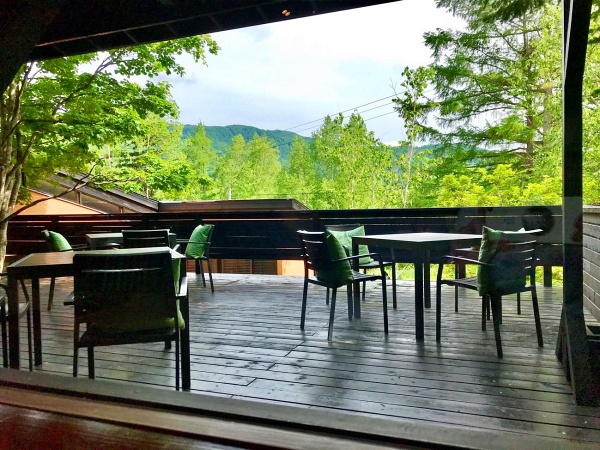Feature
- VISIT YAMAGATA
- Feature
- [Feature] Day-trip Hot Springs at Zao Onsen! Large Open-air bath
[Feature] Day-trip Hot Springs at Zao Onsen! Large Open-air bath
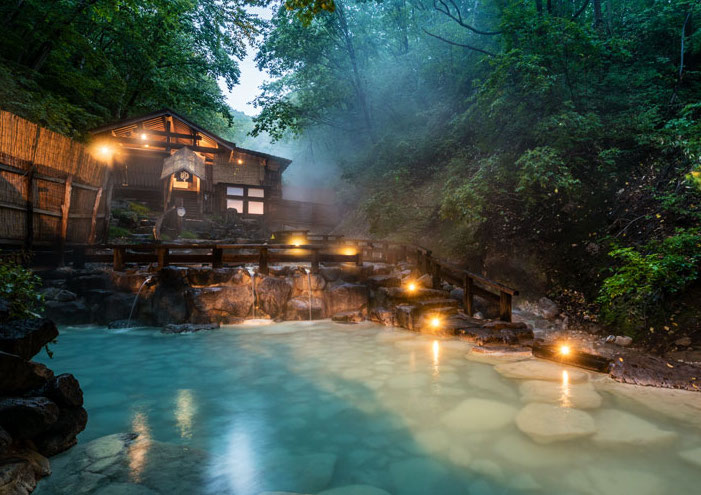
Zao Onsen is located in a comfortable plateau on the hillside of the Zao mountain range. In recent years it has often been associated with skiing, in the old days it was referred to as a Takayu, or Mogami Takayu. The hot spring is said to have been opened in the year 110. Among its characteristic and now the symbol of summer in Zao is the Zao Onsen Large Open-air bath located in the midst of nature.
This fifth feature article on the Zao Onsen day trip bathing facilities will introduce the Zao Onsen Large Open-air bath that you should definitely visit if you come to Zao Onsen during the green season or the autumn leaves’ season.
* Zao Onsen Large Open-air bath is not open during the winter
Overwhelming amount of hot water and optimum hot spring temperature
The flow of the river and the chirping of wild birds, the unique smell of sulfur in Zao Onsen, the cool air unique to the plateau, the nature that jumps into your eyes…
The large open-air bath in the magnificent nature where you can feel the seasons was completed in 1987 to be the highlight of Zao Onsen’s summer.
This large open-air bath uses hot springs that spring from five sources and boasts an overwhelming amount of hot water of 573 liters per minute.
In addition, the spring temperature is 40°C to 53°C , which is the optimum temperature for bathing, and it is a hot spring with a very blessed environment.
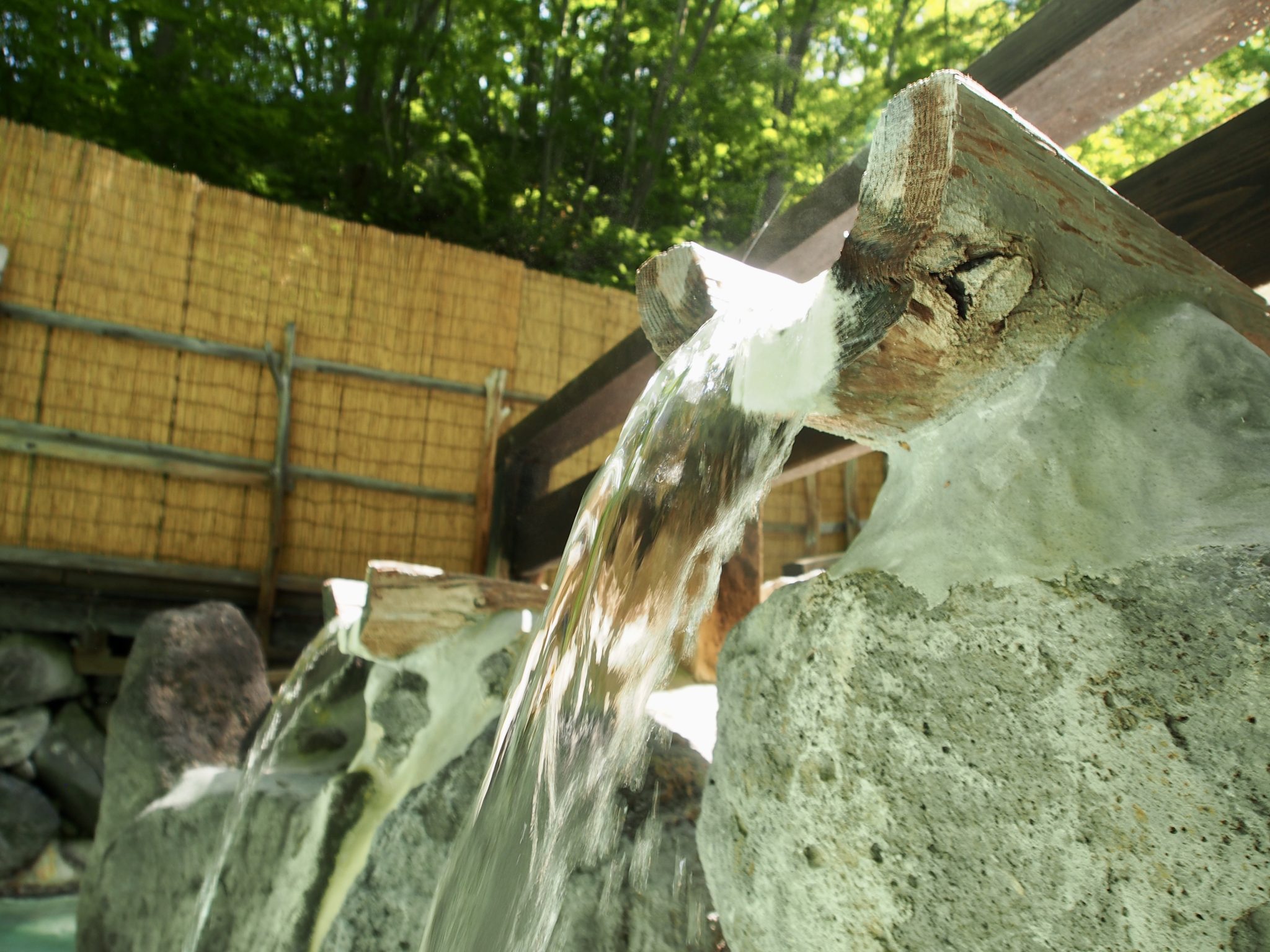
The large open-air bath is located in spring source area located in the east of Zao Onsen town that is commonly known as “Ichidogawa source” or “Shindo-no-sawa source” known for its water that has a special effect on cuts and heat rash. It is a famous yunohana collection site.
* Yubana or Yunohana are hot spring mineral deposits often seen floating in the baths of highly sulfuric springs like Zao Onsen.
Here is a picture of yunohana collection that has been traditionally performed at Zao Onsen since the Edo period (in recent years, this traditional method has rarely been used).
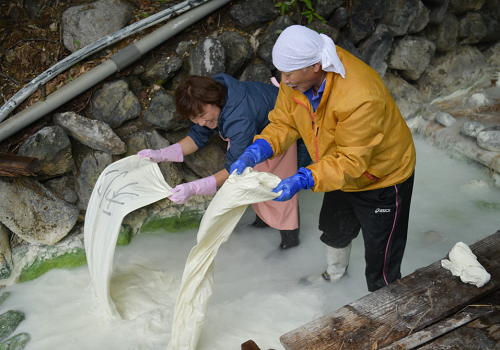
The collected yubana are squeezed and rolled to make Yunohana Dango.
They are then fully dried to be used later in your own home’s bath.
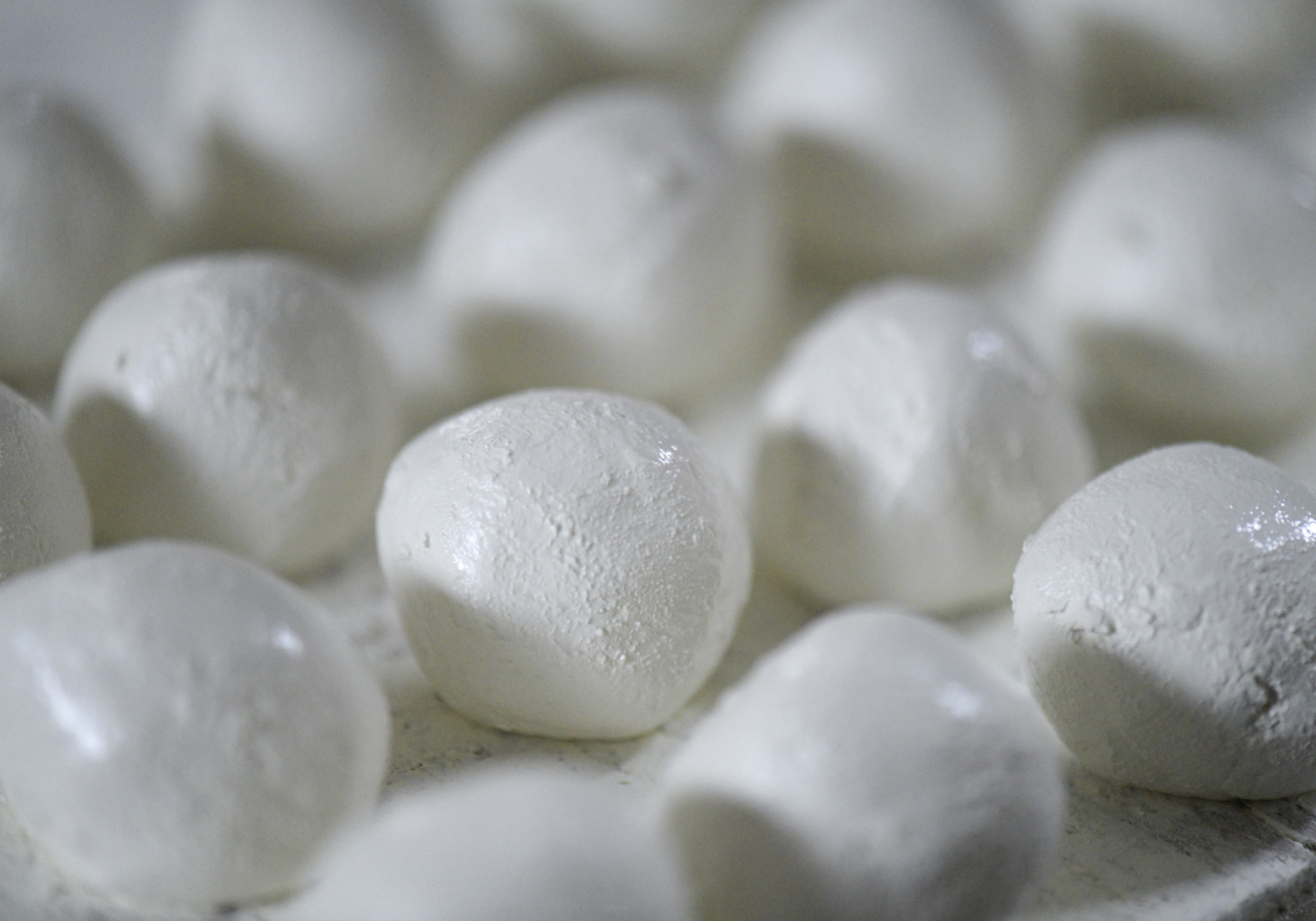
I have derailed a little, but I will introduce Zao Onsen large open-air bath in such a blessed environment immediately!
Exciting to reach
Wide Parking Lot
From Zao Onsen, follow the signs and climb the mountain path to reach the large parking lot.
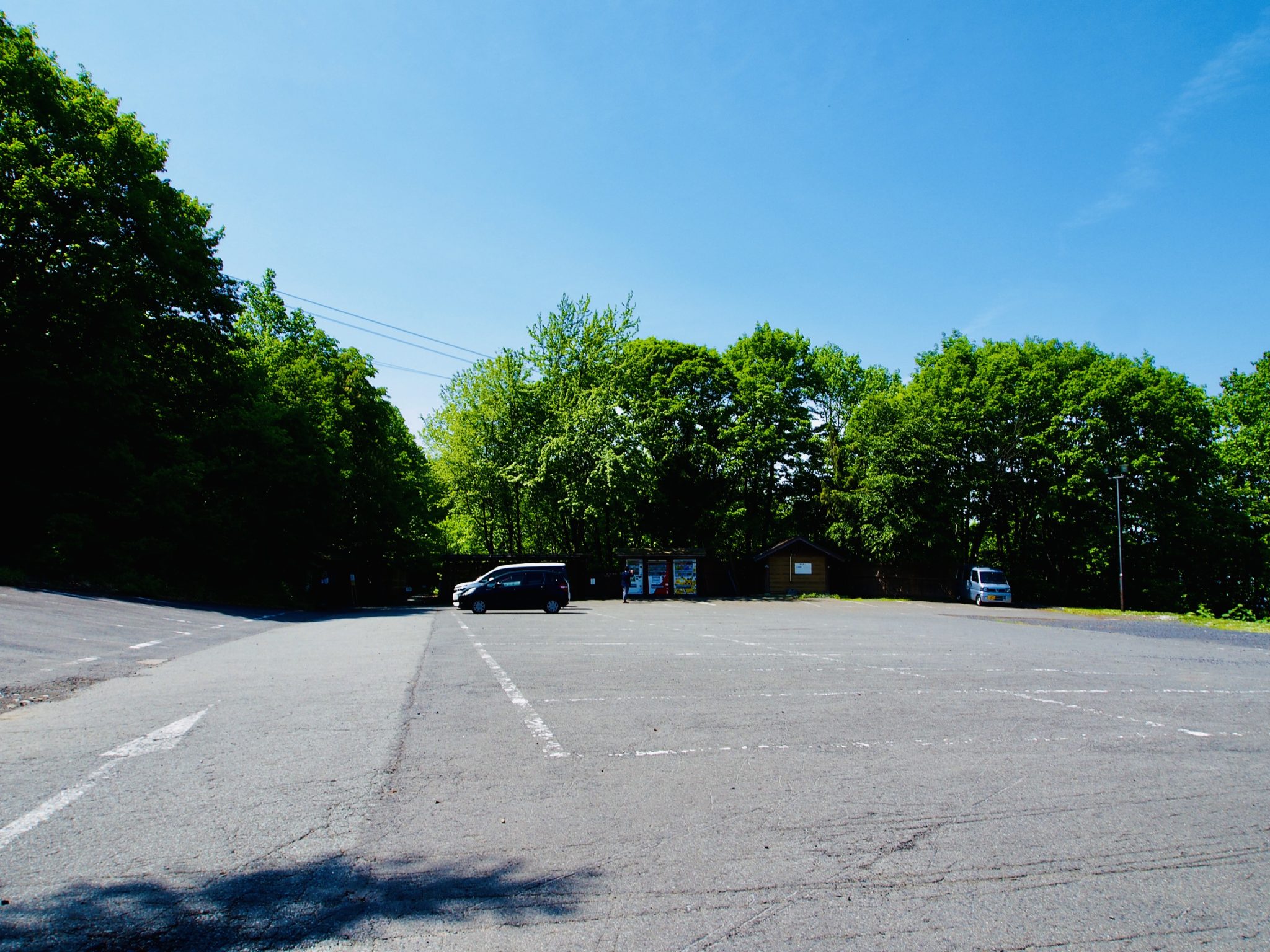
Behind the parking lot are covered benches, vending machines, and restrooms where you can relax with a drink before or after entering the hot spring bath.
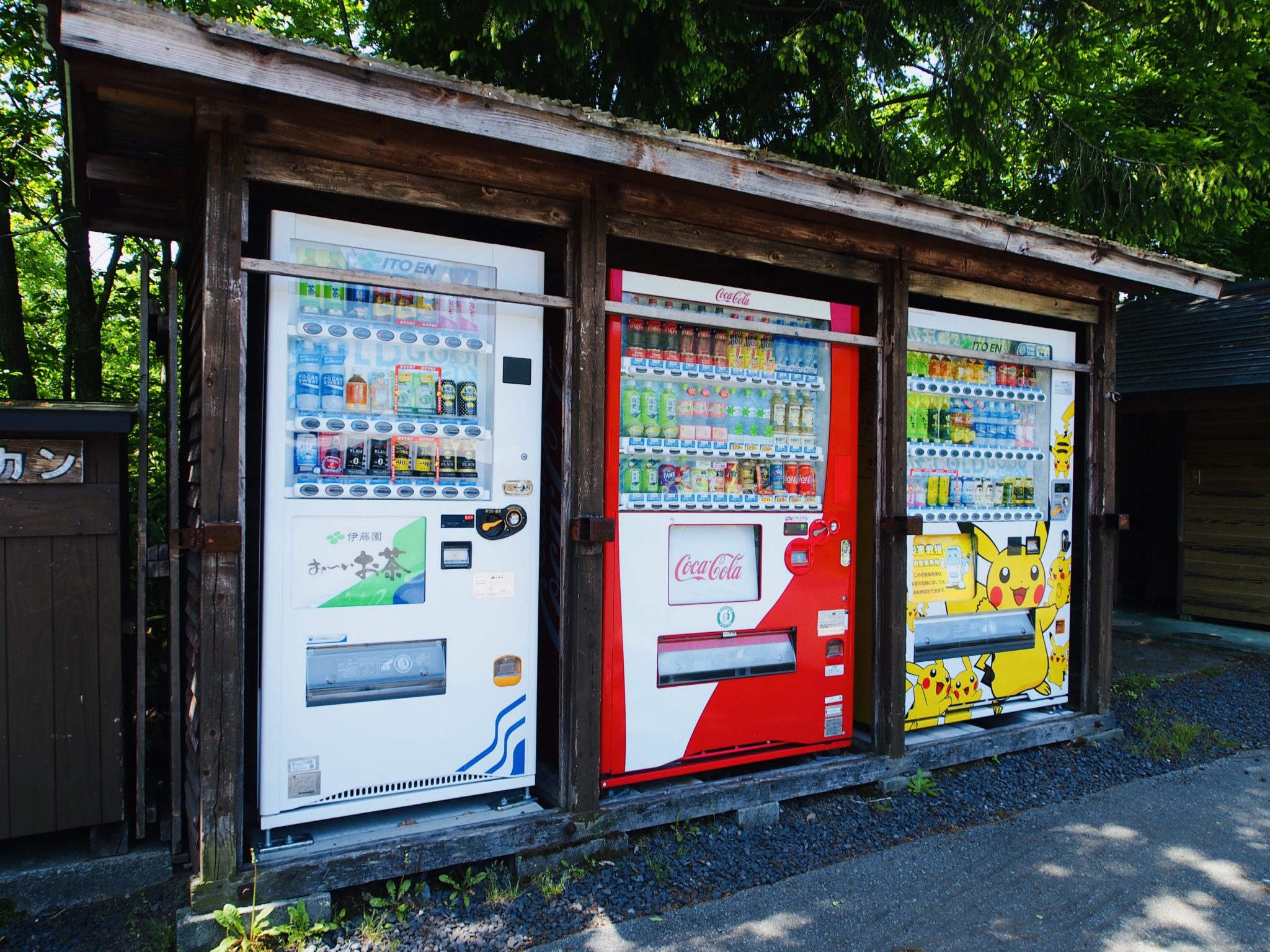

By the way, this is the restroom.
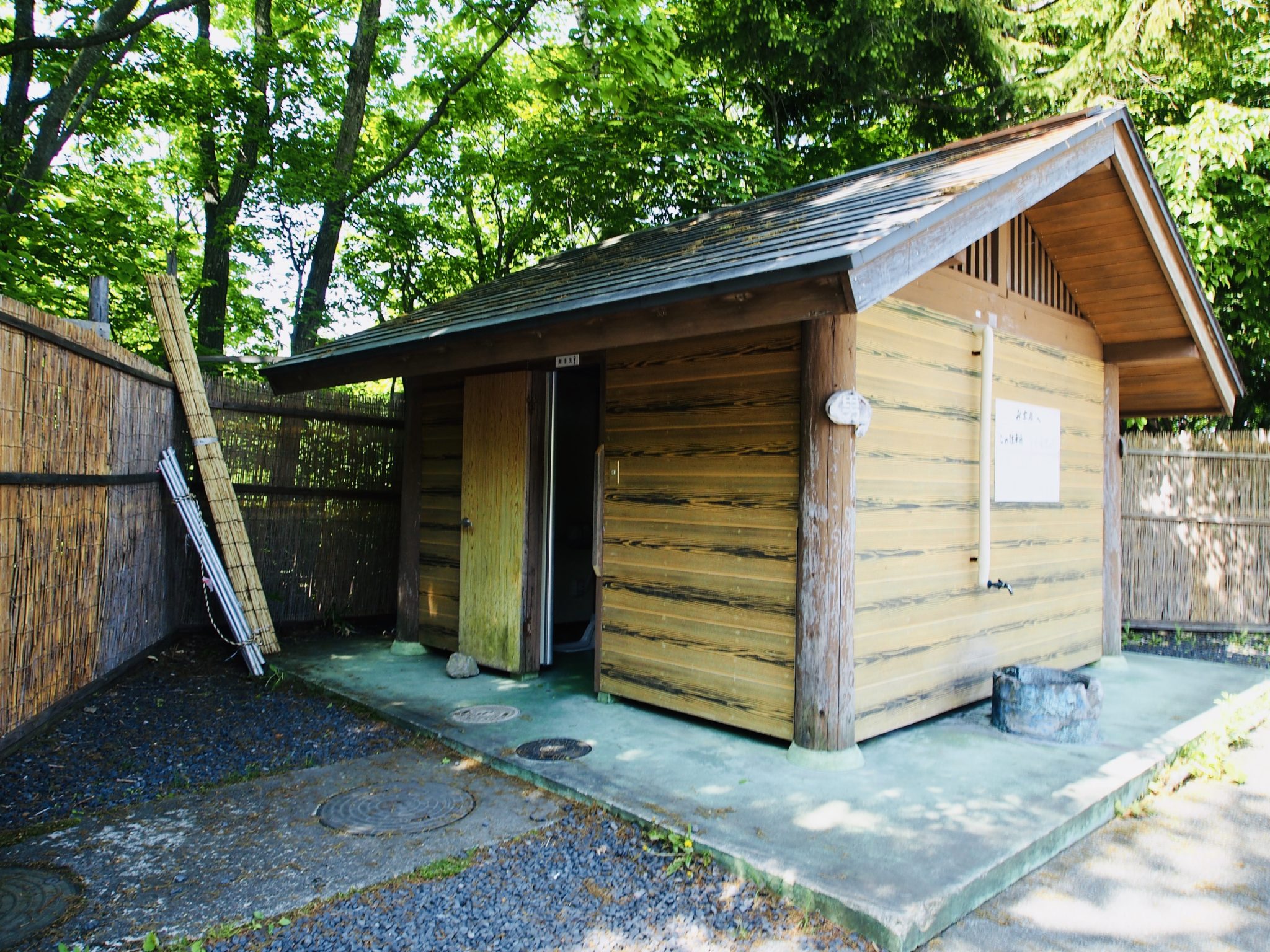
There is no restroom in the large open-air bath facility so we recommend that you go before heading in if required.
The road to the large open-air bath is full of wildness
Now, when you are ready to enter you will go through this gate toward the bath.

After passing through the gate, there is a staircase with sunlight through the trees —

Every time you go down the stairs, you feel like you are invited to a special space.
Worship to the hot water god
After going down the stairs you will see a statue on the left of the Oyukami-sama, also known as Sukuna Hikona no Mikoto.
According to Japanese mythology, he was a small god who helped to build the country of Okuninushi no Mikoto.

It’s a little off topic, but if you go straight on Takayu-dori street, the birthplace of Zao Onsen, go through the torii gate and climb the dozens steps you will see the Sukawa Onsen Shrine.

The deities of the shrine that protect Zao Onsen from ancient times are the four pillars of Okuninushi, Sukunahikona, Susanoo no Mikoto and Kagutsuchi no Kami.
Of the four pillars, Okuninushi is the main deity, but when Okuninushi fell ill, Sukunahikona searched for a hot spring to heal the illness of Okuninushi. There have since been worshiped as the deities of hot springs.
It is said that this statue sitting on the way to the large open-air bath was enshrined here in prayer for the well-being of the bathers, looking up to the god Sukunahikona.
Nostalgic atmosphere
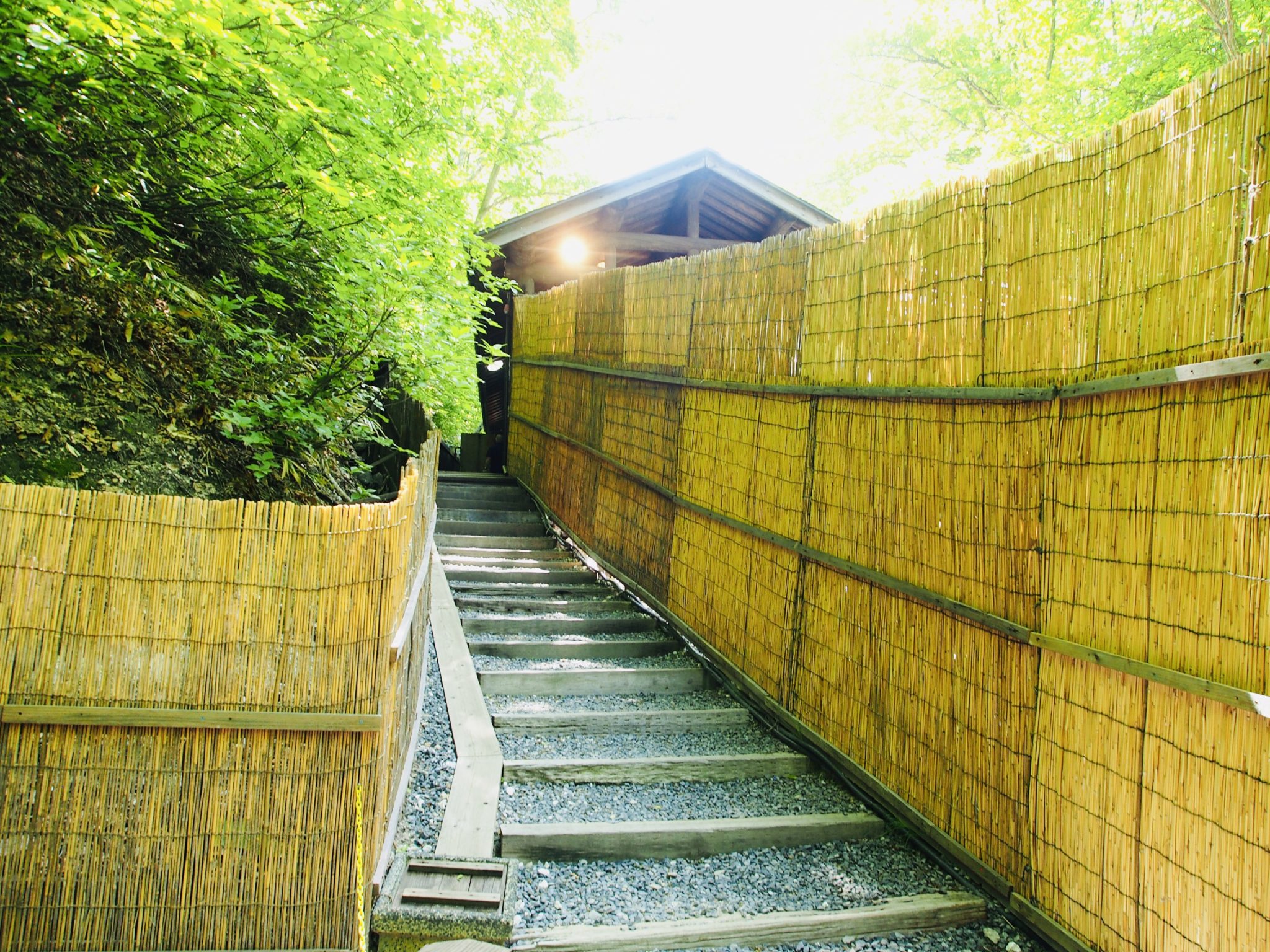
After greeting Sukunahikona Shrine and going straight on the quaint road, you will see a booth on the far right that reminds you of an old public bath facility.

▼ Staff member Tokairin-san
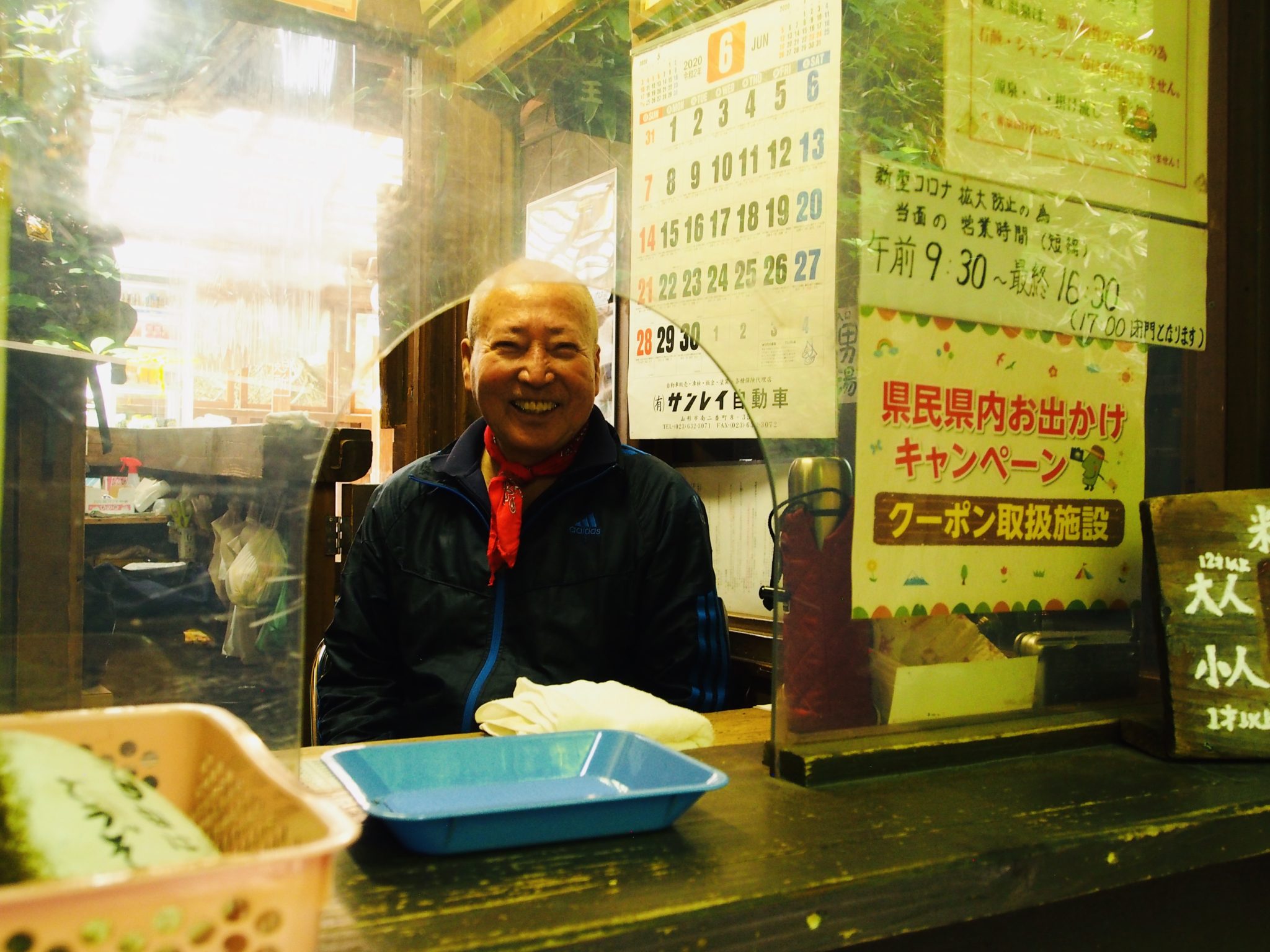
After paying here, the areas are divided into the men’s and the women’s, but take off their shoes before going inside.
[Bath fee][tax included]
Adult: 700 yen
Child: 400 yen
* 1 to 12 years old
Men's bath ~
Let’s start with the men’s bath.
It is on the right side of the reception booth.
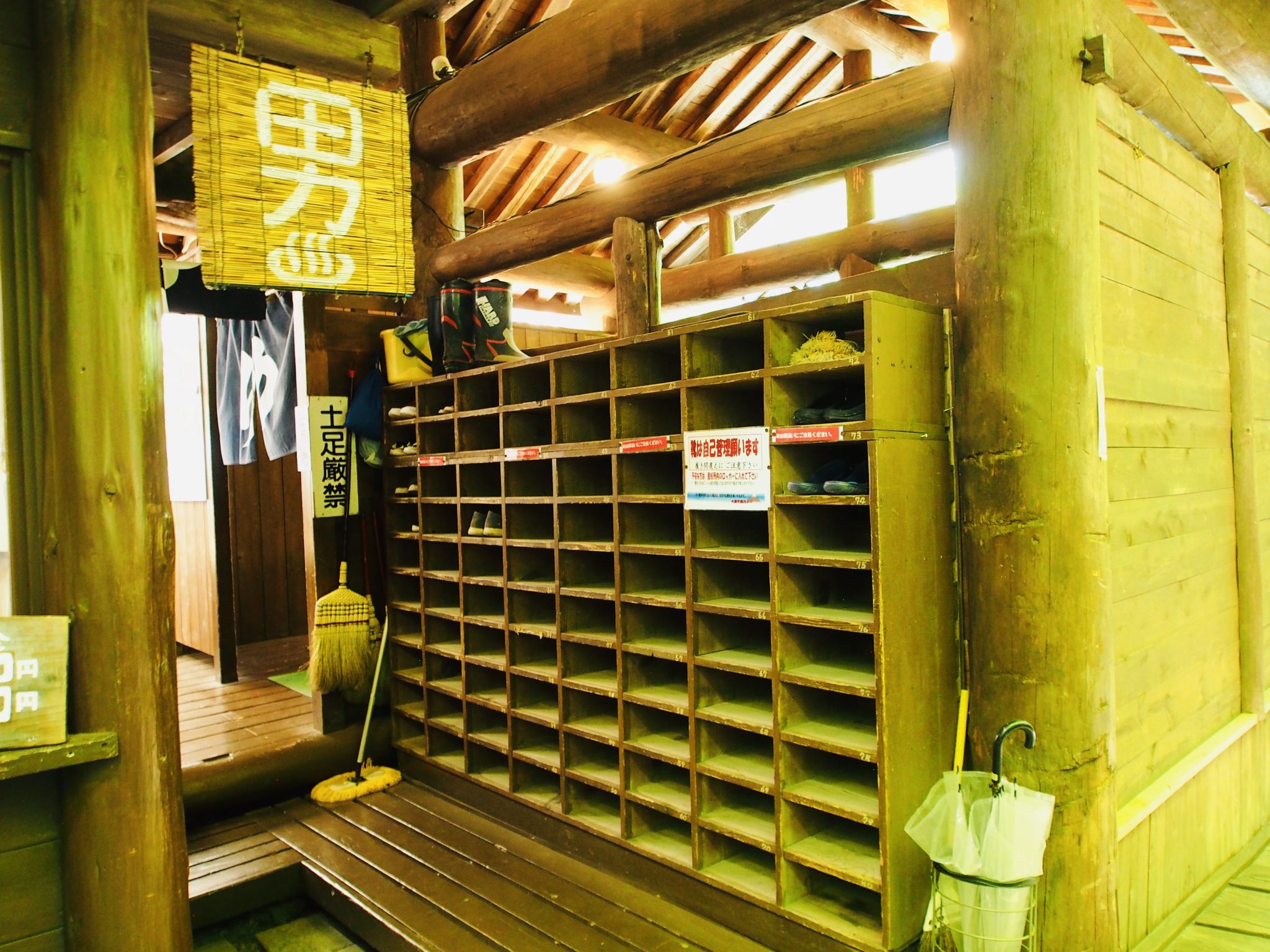
As soon as you go inside, you will see a curtain with the character “Yu” on your right.
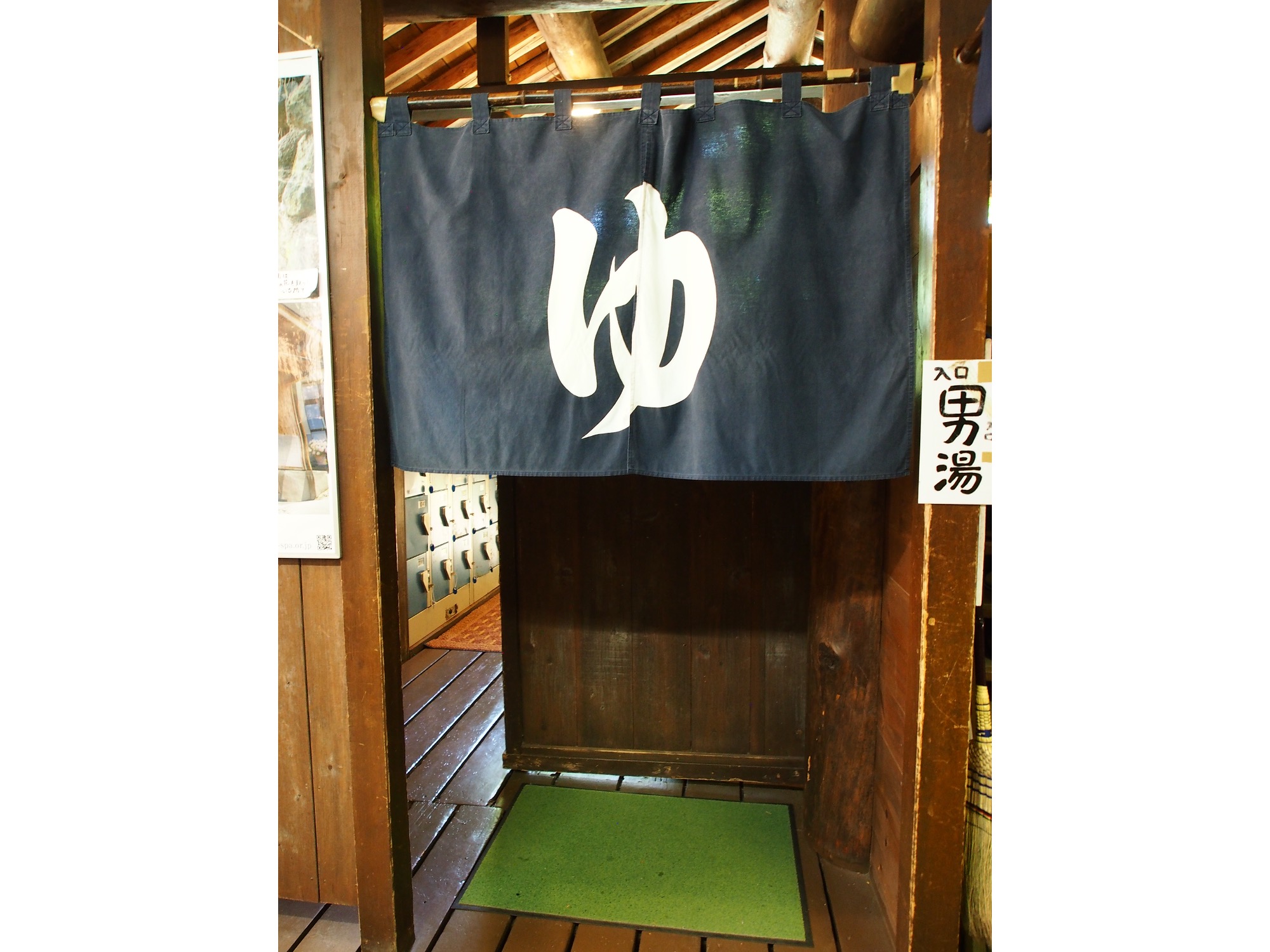
The dressing space spreads out when you pass through the curtain.
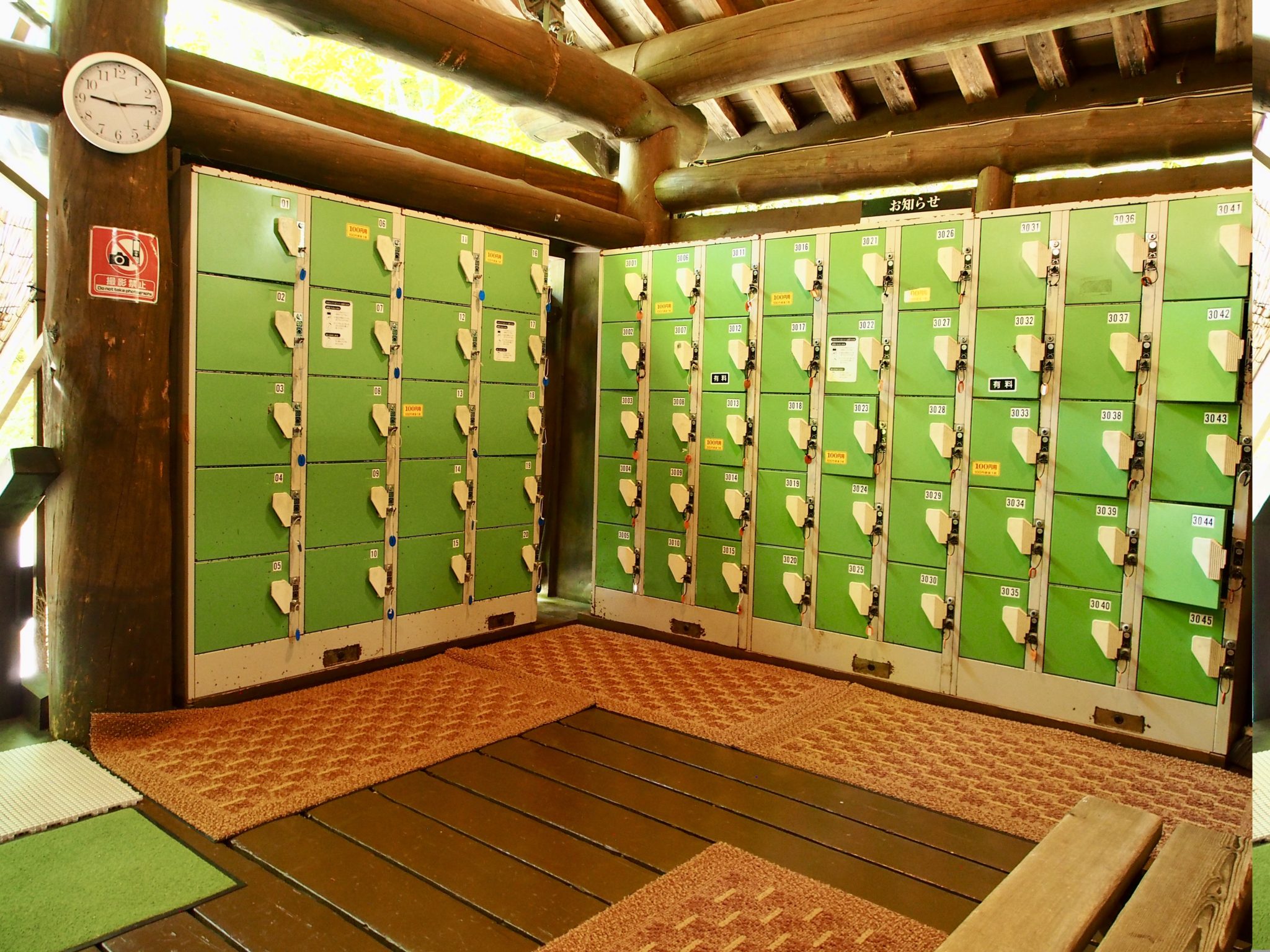
All men’s bath lockers are coin lockers (100 yen & not return type).
Then, when you stand on the stairs leading from the dressing room, you can see a piece of the large communal bath under your eyes.
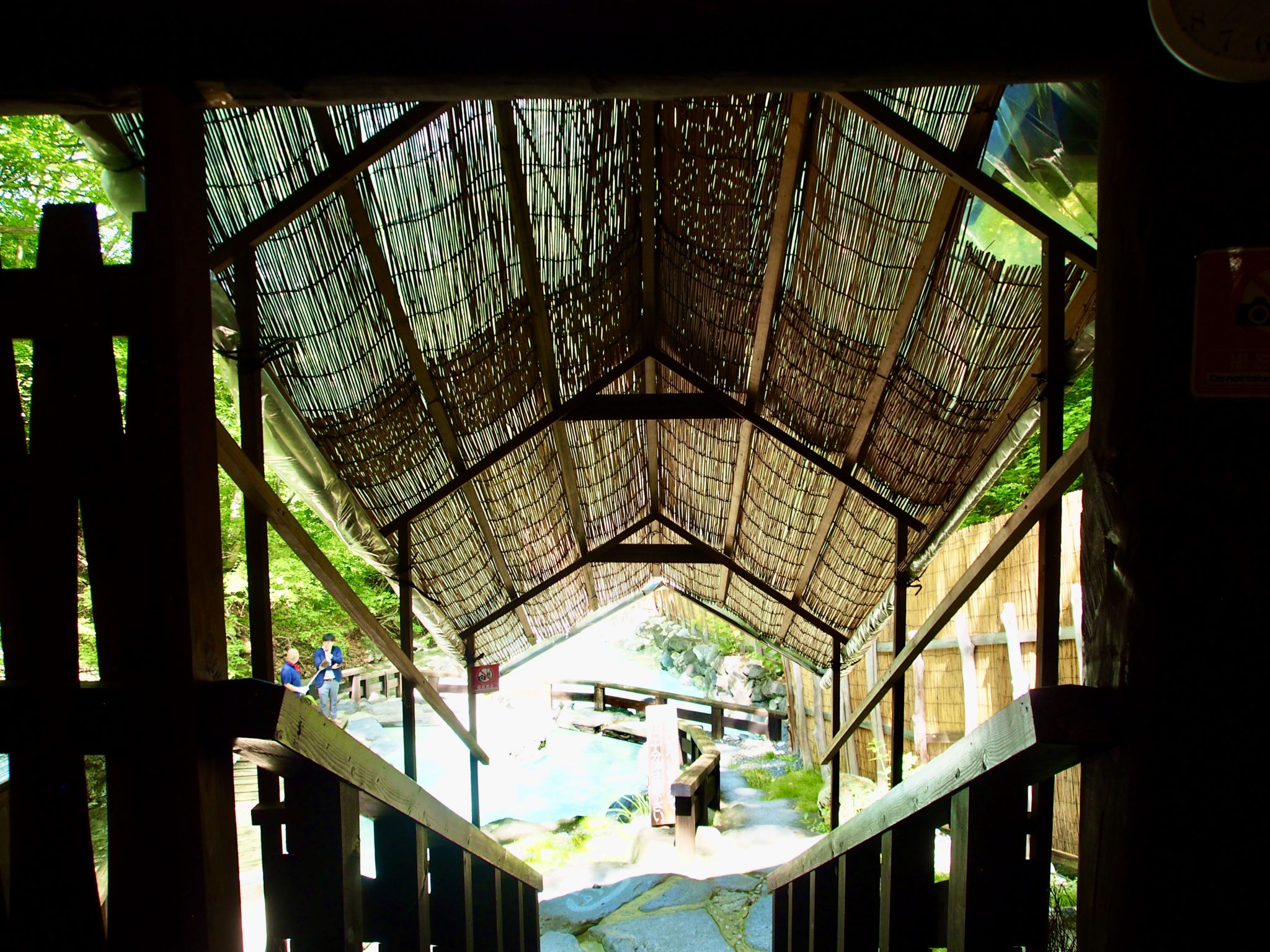
When you go down the stairs, suppress the desire to dive into the bathtub and go here first.

Note that the Zao Onsen Large Open-air bath DOES NOT have shower facilities.
Therefore, it is necessary to pour hot water over yourself here before entering the bath.
And…
here is the whole picture of the men’s section of the long-awaited Zao Onsen Large Open-air bath!

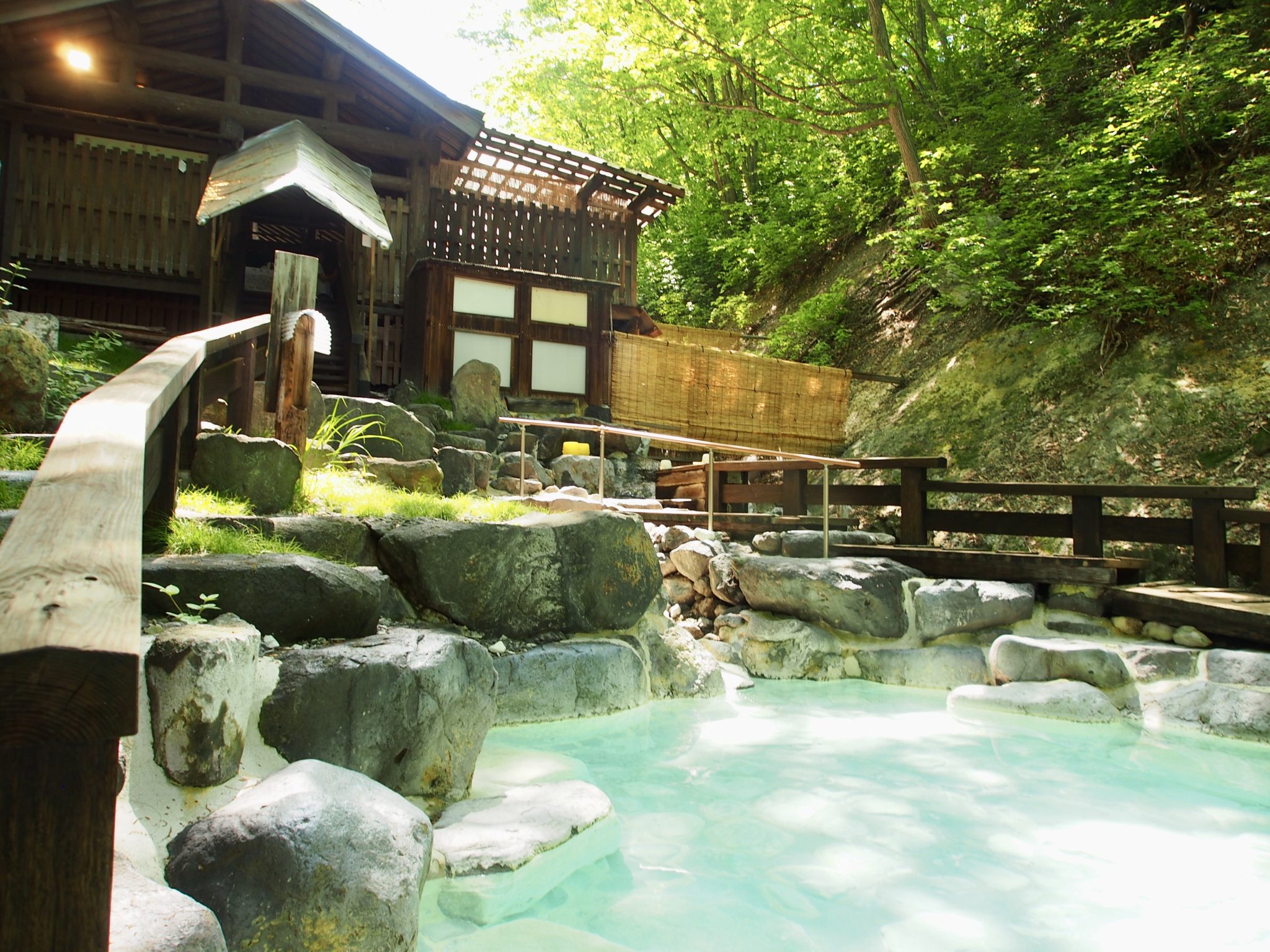
Its size, its scenery, and its openness far surpass the image we envision for an open-air bath!
It’s a big open-air bath in nature!
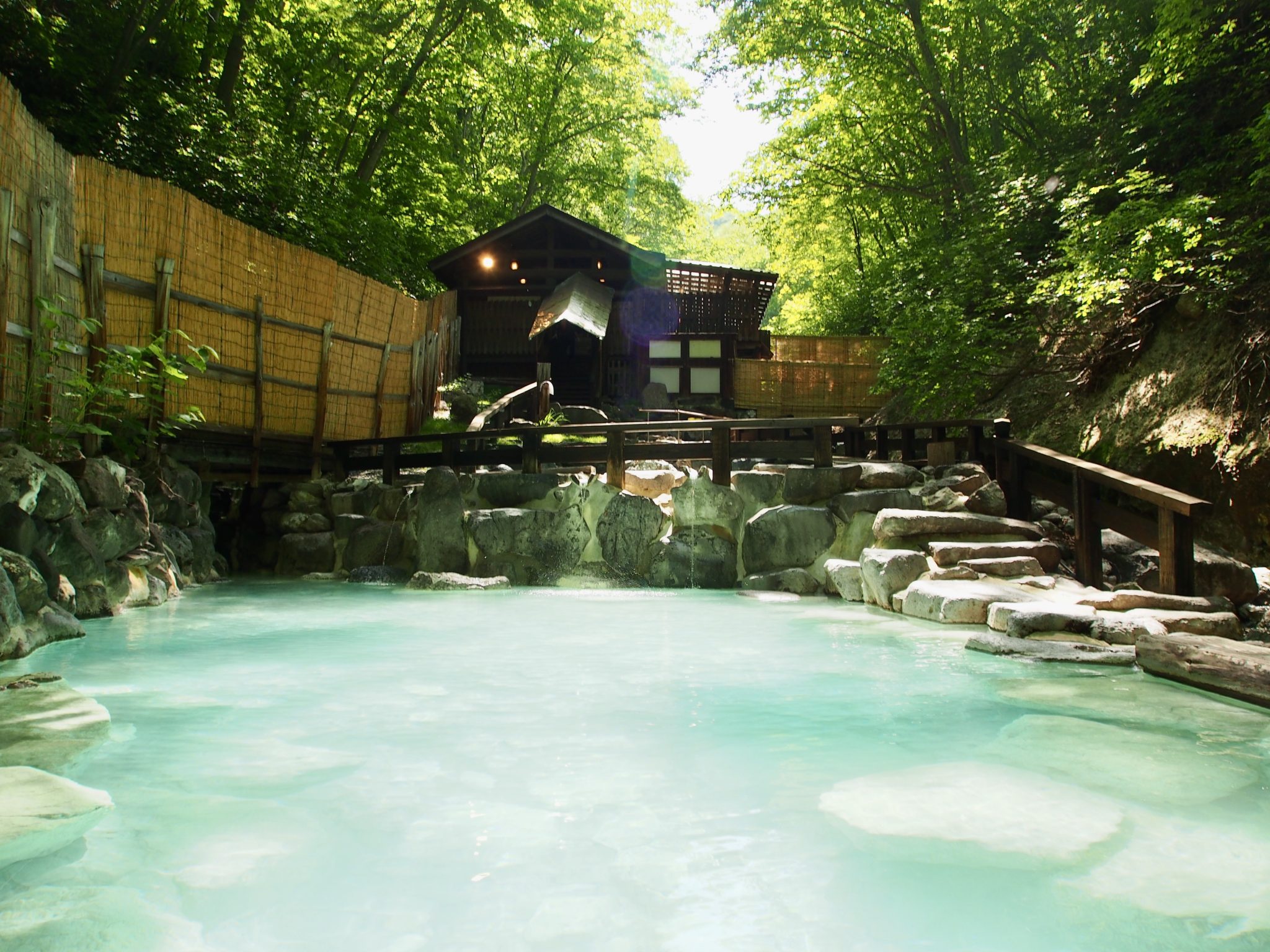
As you can see, there are two bath areas and the hot water in the upper row flows down into the lower one.
The temperature of the source is about 42 to 43°C, and since it first flows to the upper bathtub, the upstream area is hotter than the downstream one.
Therefore, you can enter waters at your favorite temperature.
The large open-air bath in the green is refreshing but refreshing, but with autumn leaves it becomes very windy and nostalgic.

Women's bath ~
Next, I would like to introduce the women’s bath.
It is on your left when facing the reception booth, so take off your shoes and go inside.

Once inside the Women’s bath area you will see a curtain on your left.
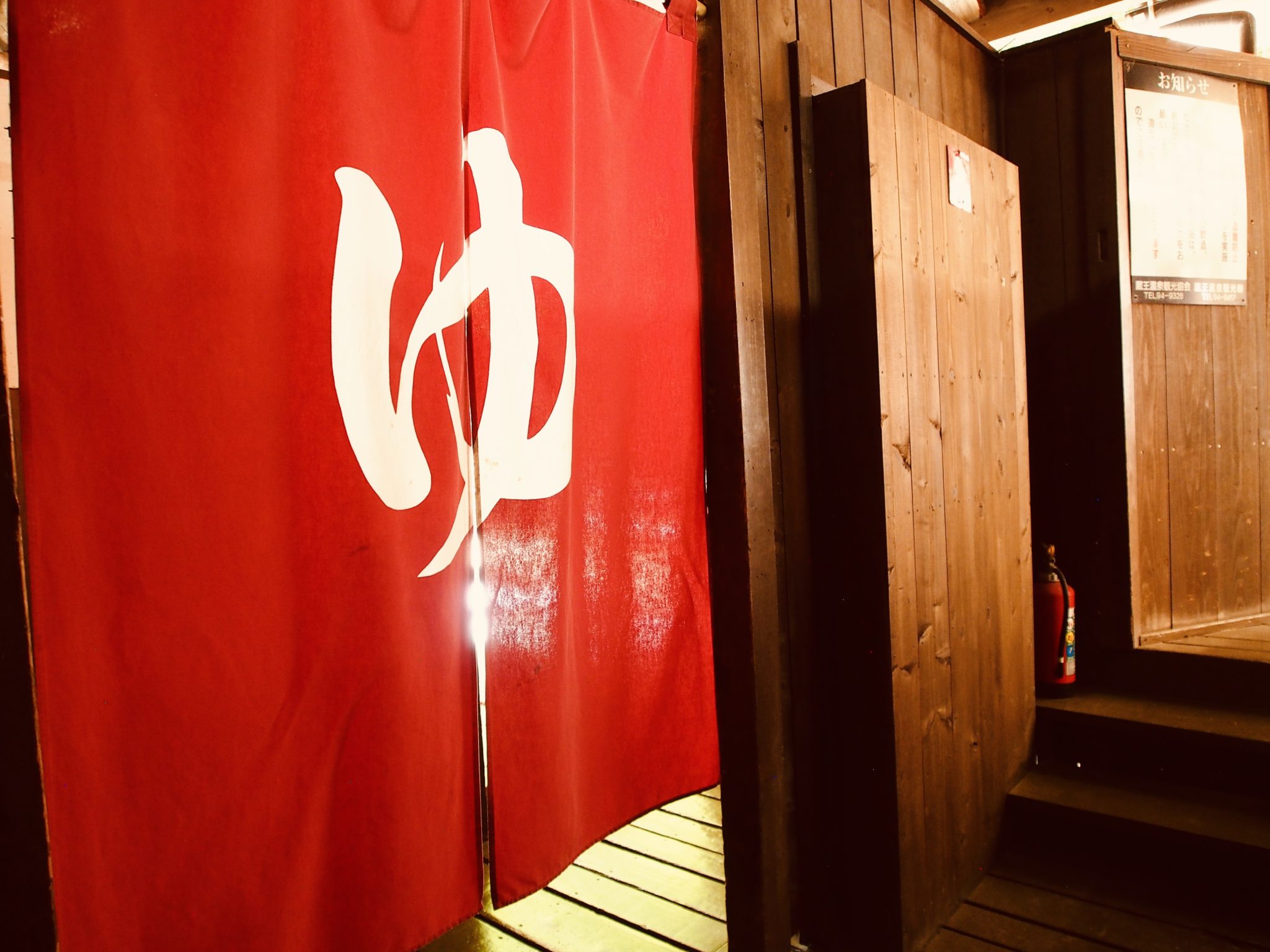
You will see the dressing space on your left and the bath on your right when you pass through the curtain.

There are two types of lockers for the women’s bath: Coin lockers and lockers with baskets (100 yen & not return type).

As with men’s bath, you should pour hot water over yourself here before entering the bath.
The women’s bath is as open as men’s!

When you look up at the sky while soaking in the hot springs, you can feel that various things in your daily life are blown away at once and you feel like you have returned to nature.
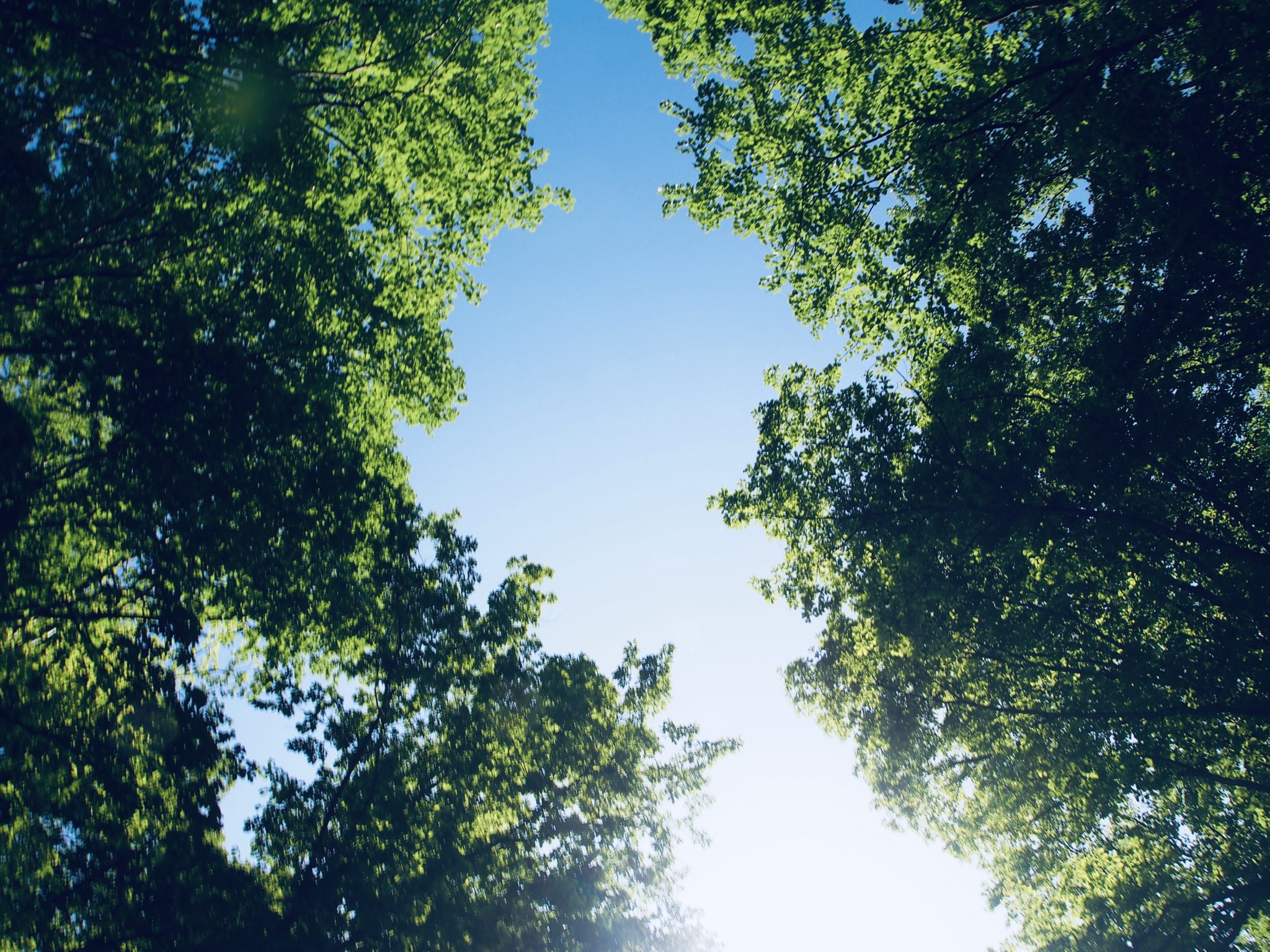
By the way, the women’s bath too is divided into upper and lower tiers.
There is a downstream here, under the building
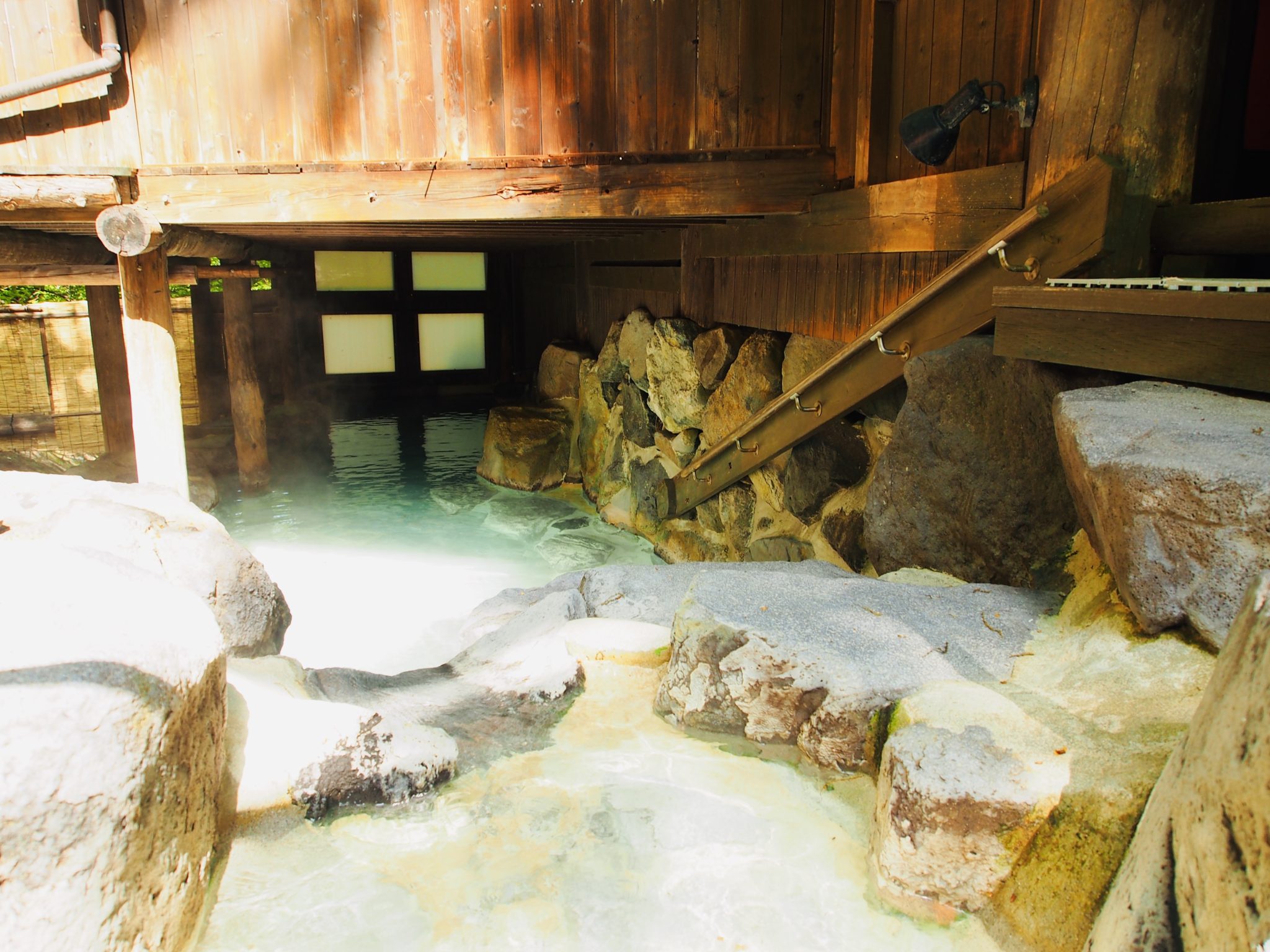
It feels like a cave, like a secret base, and it’s a little adventurous.

Since the hot water in the large open-air bath is neither heated nor has added water, the temperature of the bath depends on the outside temperature and climate, and as such it will slightly vary depending on the hour of the day. However, as the hot water on the lower tier is quite lukewarm, such variation will not be much. It may be just right for children and those who are not good with too hot water.
Blessed environment of eight sources
As I mentioned at the beginning, Zao Onsen’s large open-air bath uses hot springs that spring from five sources.
The source is upstream of the river above the women’s bath.

Upstream of this, in addition to the Hanatare, Otsun, and Hinako hot spring sources that supply the men’s bath and the Umataki and Hira sources that supply the women’s bath, are found the Koyamae, Matsuzaka and Futarigawa sources
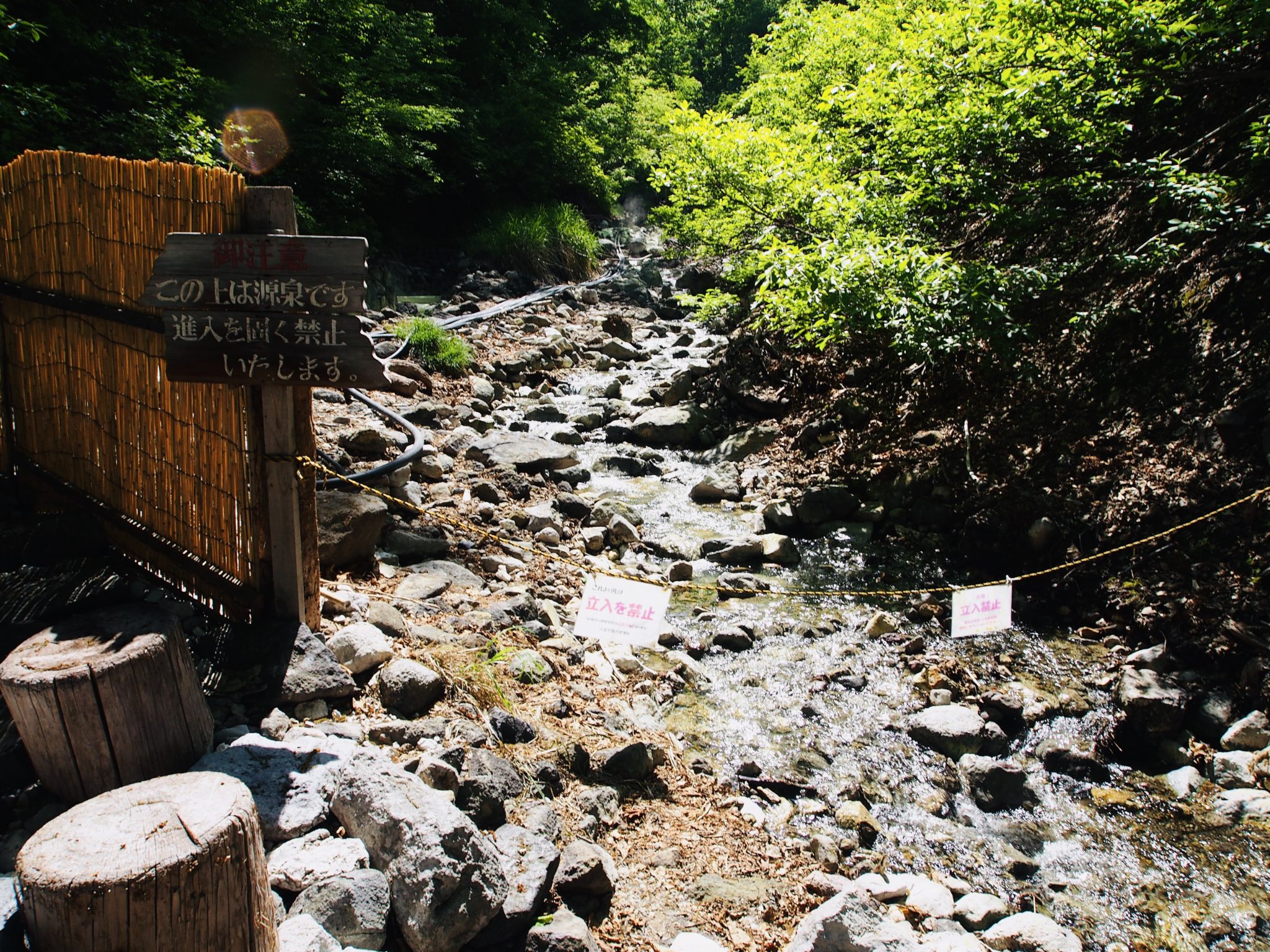
By the way, one of the surprises of entering the large open-air bath is that the river runs right next to the baths.
When you touch the river, its water is lukewarm, with a hint of seaweed and sulfur.
The water that springs from the three sources mentioned earlier (Koyamae, Matsuzaka and Futarigawa) flows through this river.
This river is called Ichidogawa and is rare as it is a mixture of mountain water and hot spring flows.
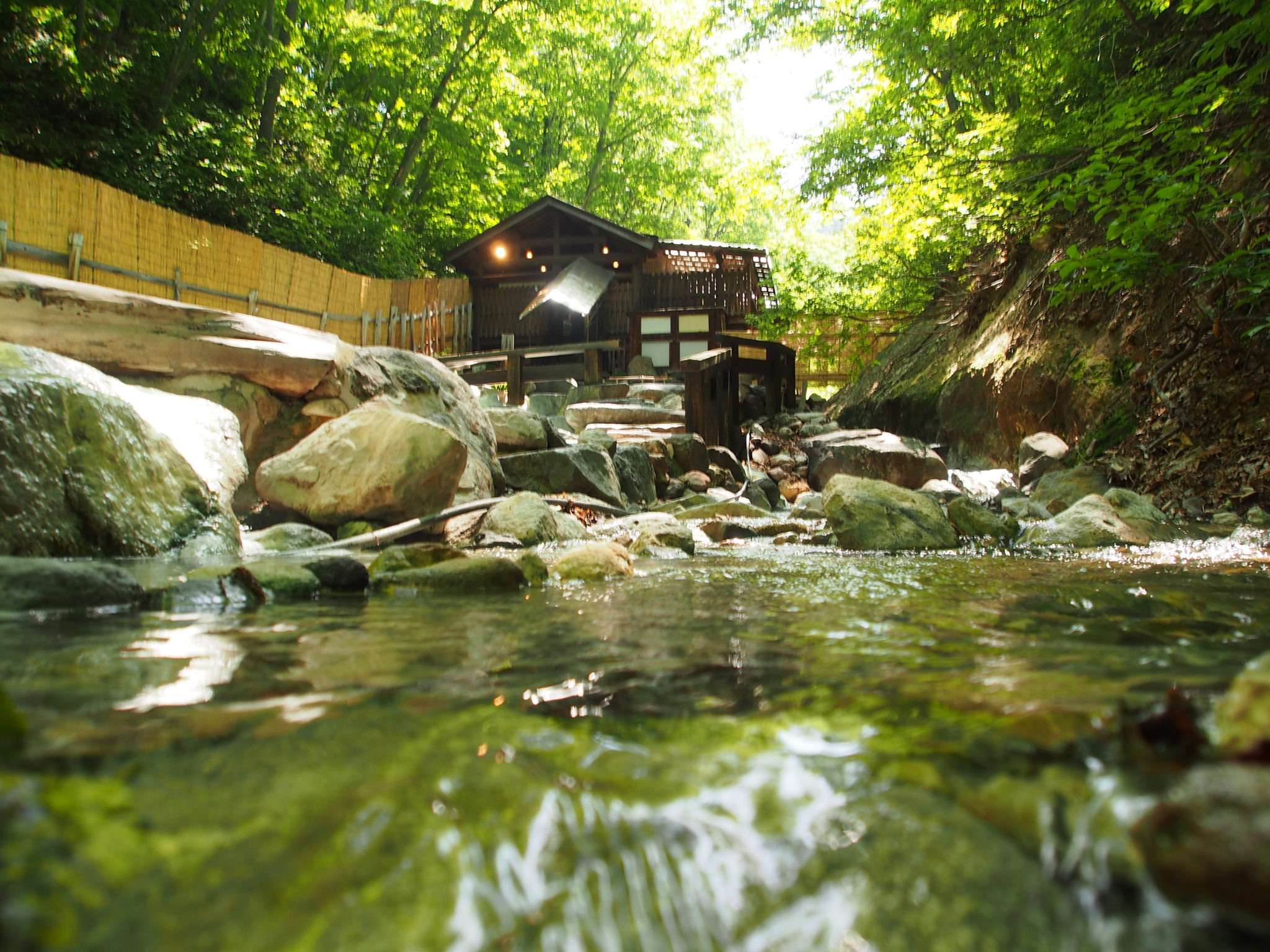
While soaking in the hot springs, the murmuring of the river, which is a mixture of hot springs and mountain water, can be heard.
It is a precious landscape and soundscape that is rarely found anywhere else.
Take a break after bathing
Enjoy a bath in the great outdoors, and when your body warms up, take a rest.
There is a space for meeting and resting after the bath in the back of main building.
By the way, the lower tier bath of the women’s section is just below this.

In addition to canned and packed juice and ice cream, there is also the famous tama konnyaku (konjac balls), which is irresistible after bathing.
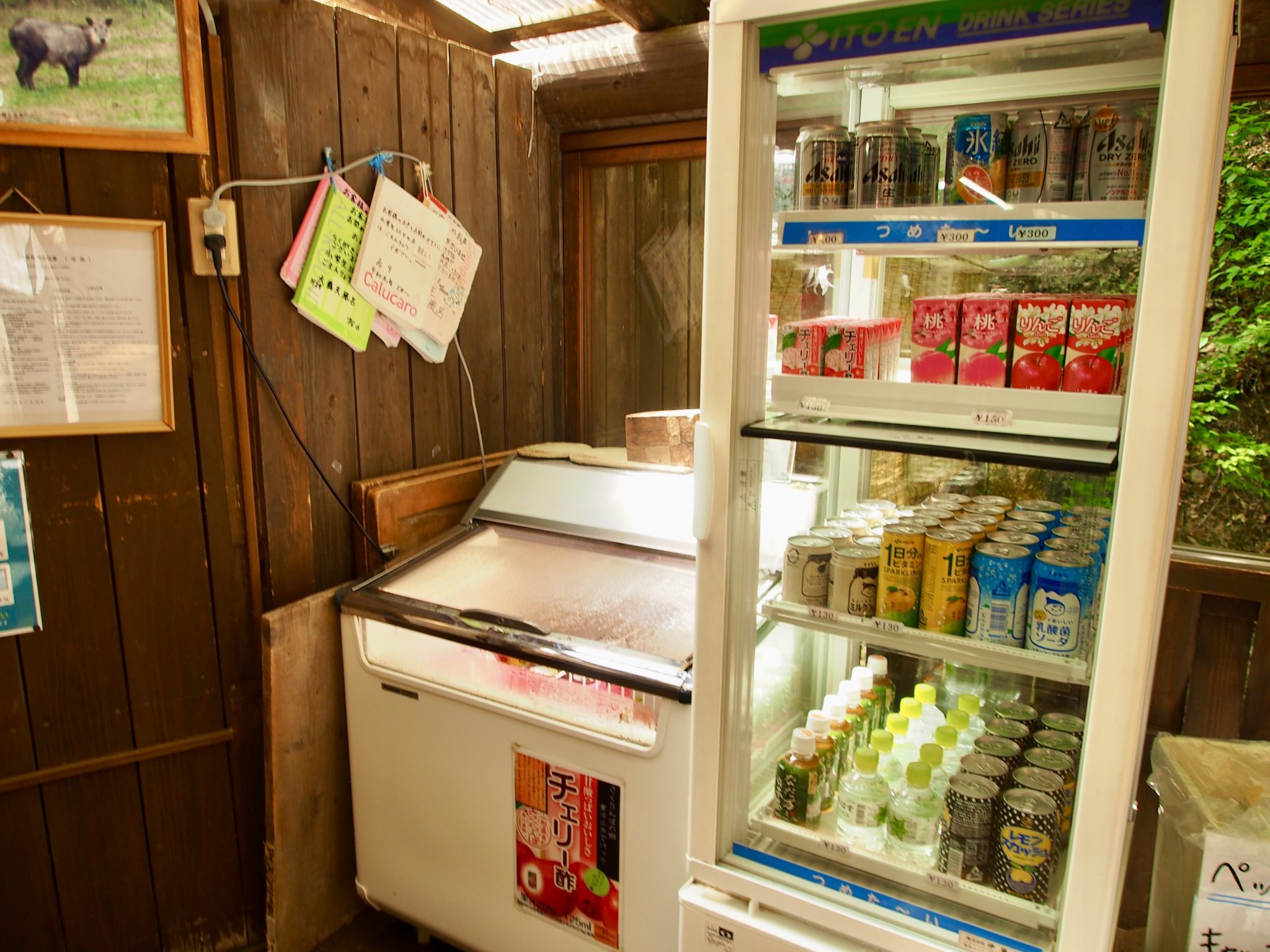
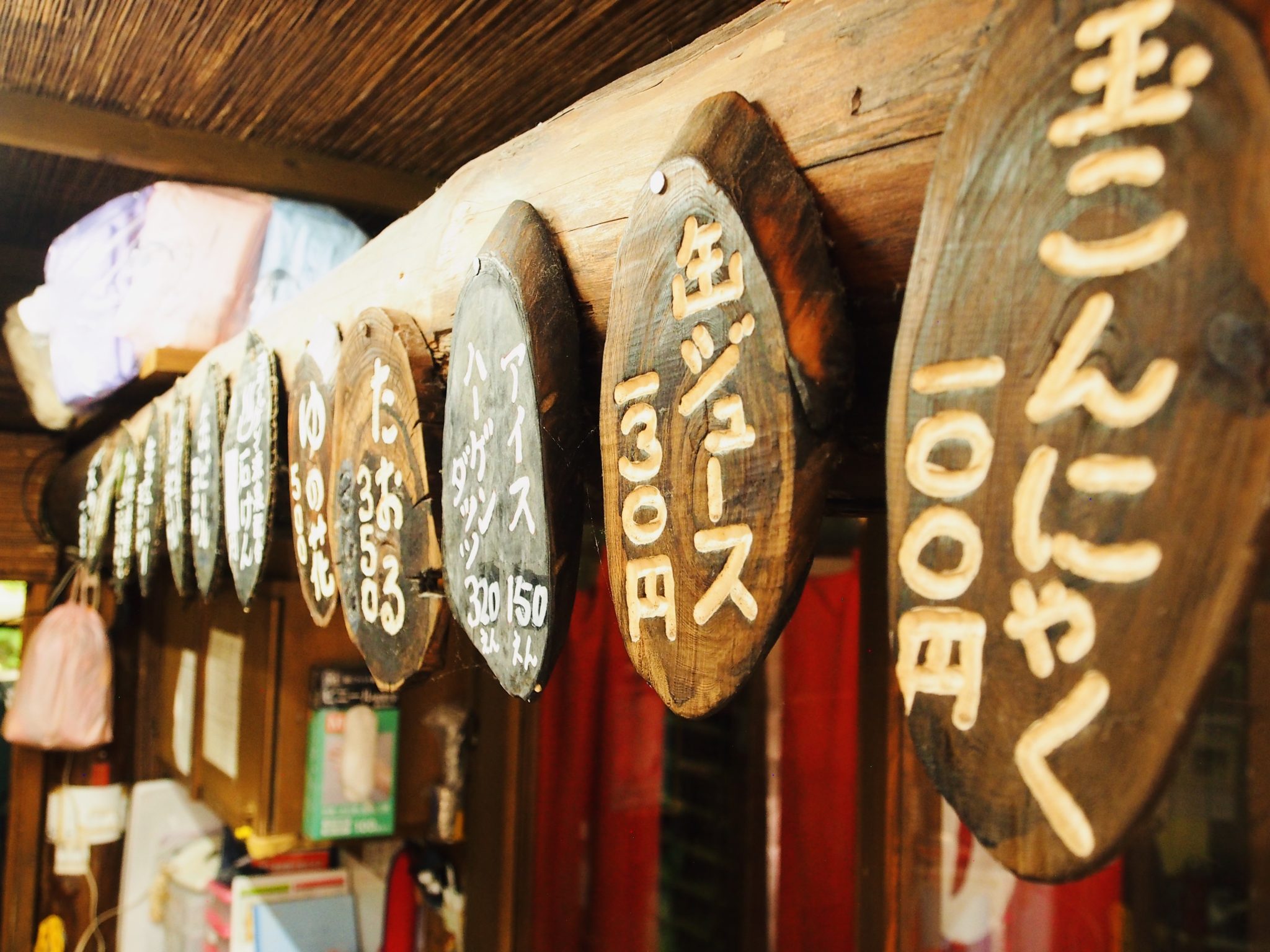
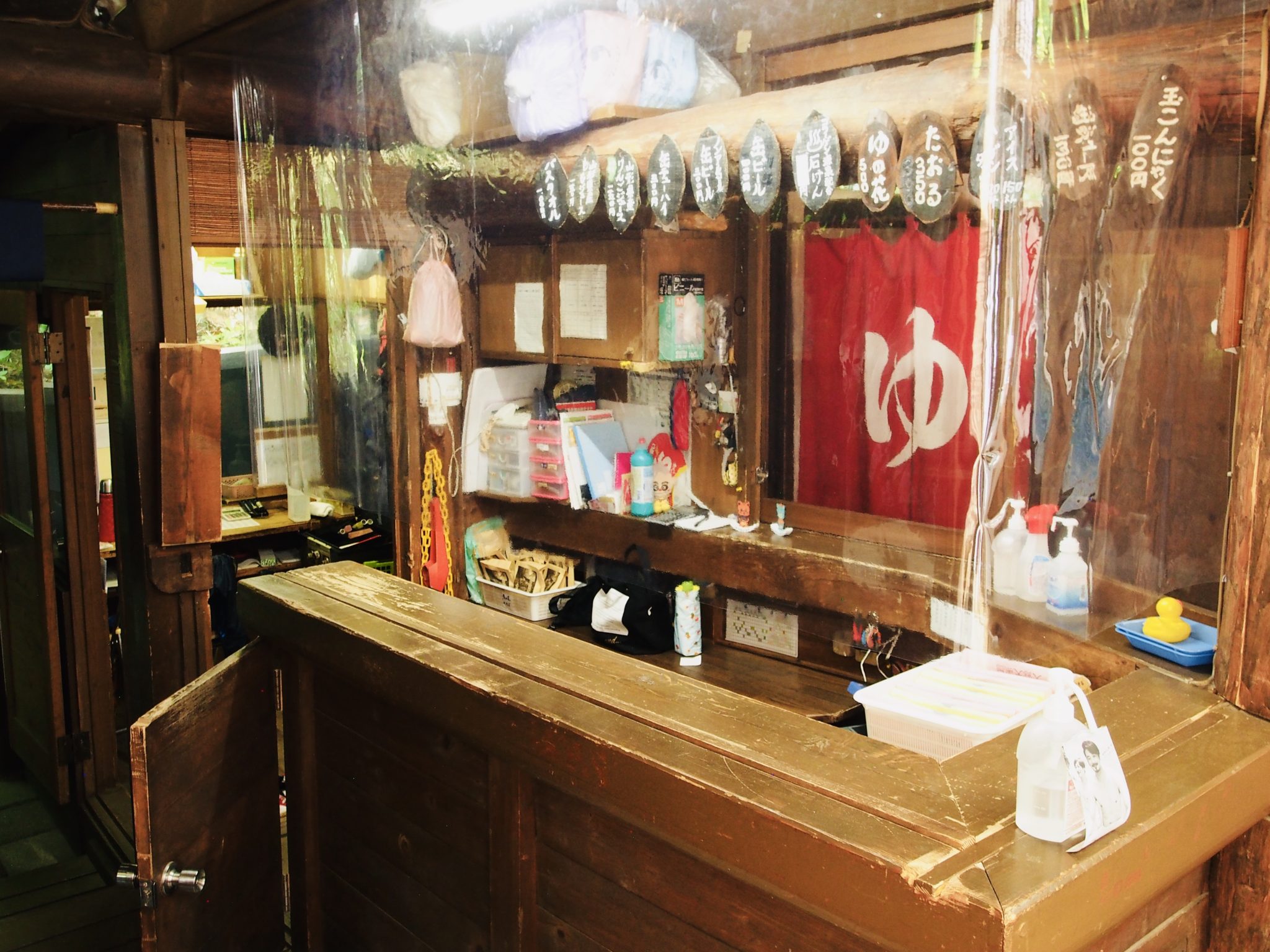
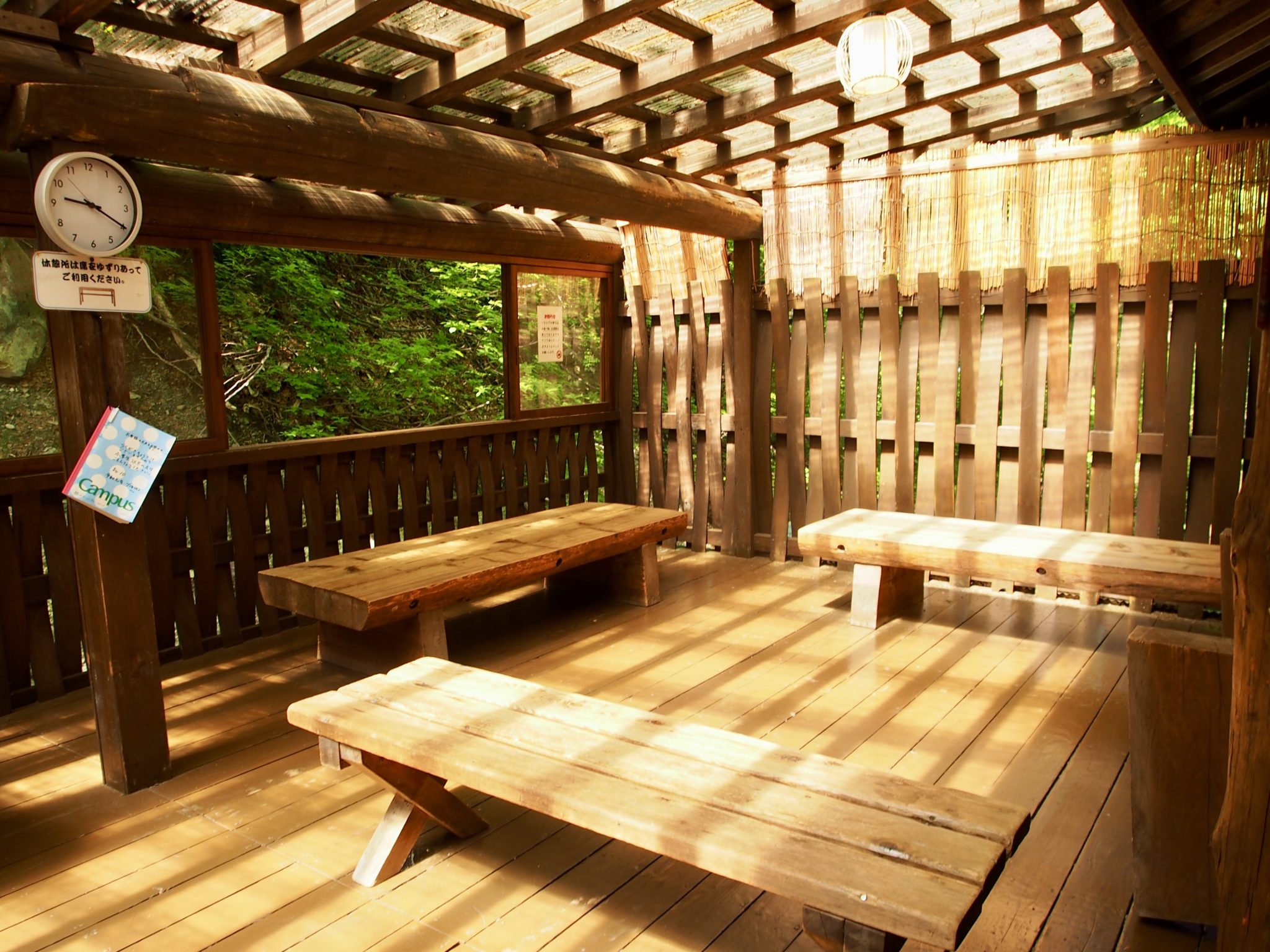
The shop also sells Yunohana, a natural bath salt collected at Zao Onsen.
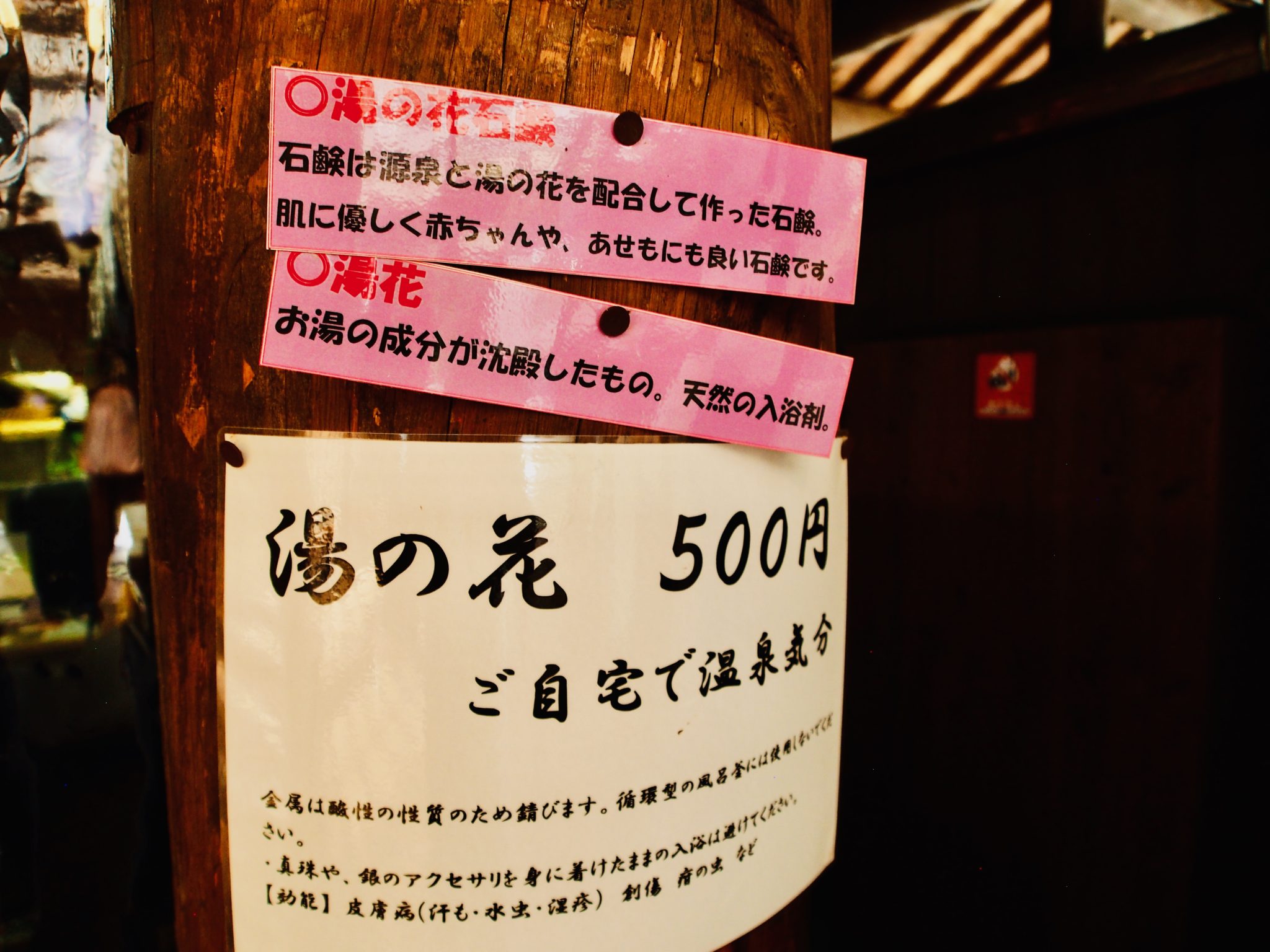
If you like Zao Onsen’s water qualities, or if you are suffering from heat rash or eczema, why not buy one?
* Zao Onsen is a strongly acidic hot spring that contains hydrogen sulfide, so metal objects will rust quickly. Therefore, do not use it in a circulation-type bathtub. Please be careful about how to use it, such as dissolving it in a hot water tub.
Finally
When I looked up at the sky after the bath, the leaves were swaying in the wind.

Zao Onsen’s large open-air bath was a very pleasant hot spring where you can refresh your mind and body and enjoy a feeling of openness and return to nature.
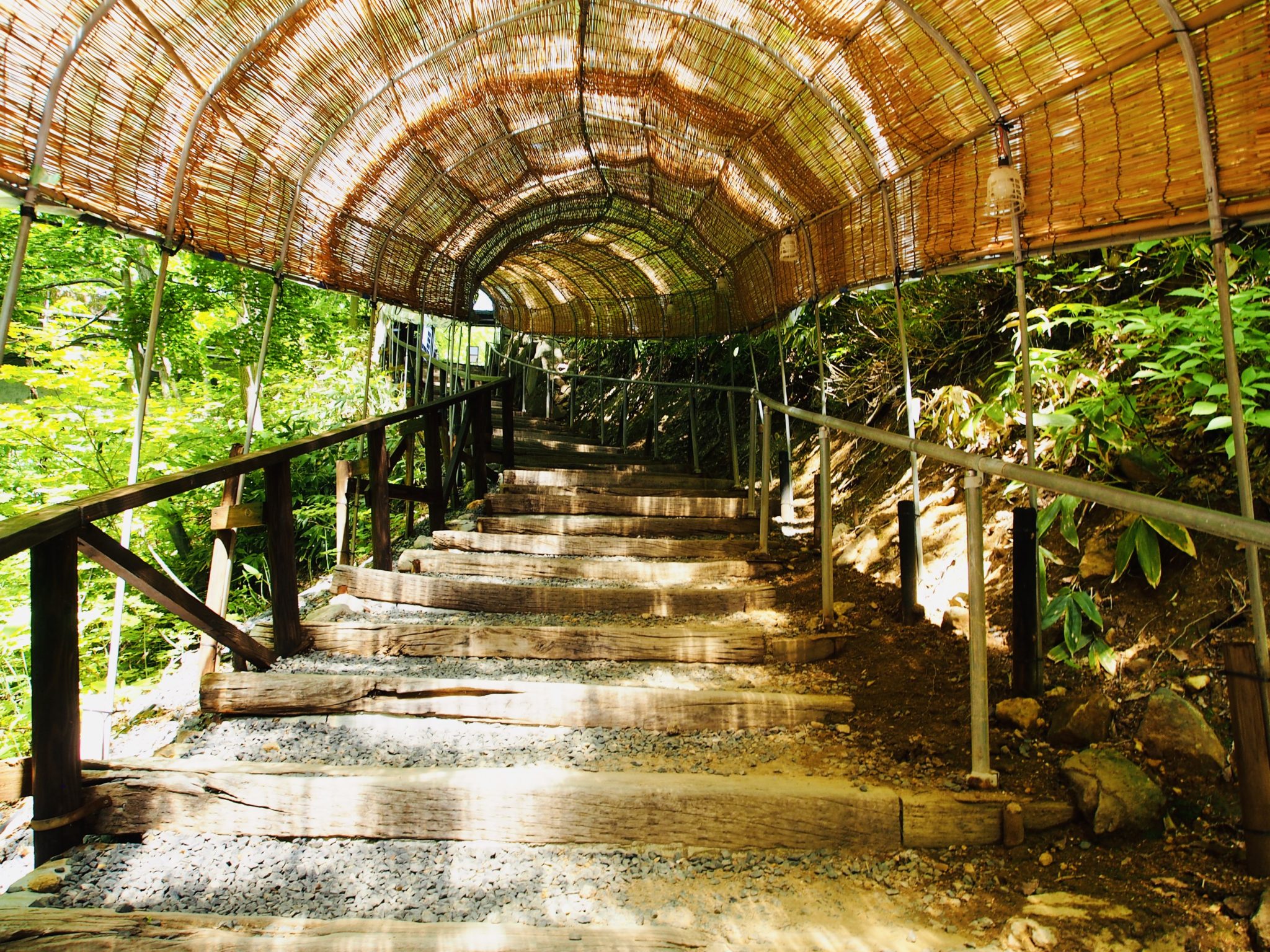
Message from the staff
“It is a place where you can enjoy a relaxed atmosphere while feeling the four seasons in the great outdoors.
Please come and heal your daily fatigue.
All the staff are waiting for you. “
Said Zao Onsen General Manager Watanabe of Zao Onsen Tourism Co., Ltd., which manages the large open-air bath.
Zao Onsen’s big open-air bath —
Why don’t you visit to refresh your mind and body?
Onsen information
| Facility name | Zao Onsen Large Open-air bath |
| Water qualities | Acidic sulfur-containing sulfate chloride hot spring (hypotonic acidic high hot spring) |
| Added water | None |
| Heating | None |
| Overflow & filtration | All hot spring water is (discharged) |
| Additives | No bath salts or disinfectants are used |
| Source name | Water | Source temperature | Discharge volume (per minute) | Used for |
| Hanatare | Natural spring | 43.0 ℃ | 30.0 ℓ | Men’s bath |
| Otsun | Natural spring | 48.0 ℃ | 195.0 ℓ | Men’s bath |
| Hinako | Natural spring | 40.5 ℃ | 13.0 ℓ | Men’s bath |
| Umataki | Natural spring | 51.0 ℃ | 123.5 ℓ | Women’s bath |
| Hira | Natural spring | 53.0 ℃ | 212.0 ℓ | Women’s bath |
| Koyamae | Natural spring | 51.5 ℃ | 44.5 ℓ | River release |
| Matsuzaka | Natural spring | 51.0 ℃ | 65.0 ℓ | River release |
| Futarigawa | Natural spring | 49.0 ℃ | 52.5 ℓ | River release |
| Total discharge (per minute) | 735.0 ℓ | |||
Business period
Annual: Mid-April to November 23
* Not open in winter
* Business start dates are subject to change depending on the thaw conditions.
* The closing date may change depending on the snow conditions.
Hours
[Usually]
6:00~19:00 (last entry at 18:30)
————————————————– —————–
Hours will be shortened for the time being to prevent the spread of COVID-19.
Weekdays: 9:30~17:00 (last entry at 16:30)
Weekends and holidays: 9:30~18:00 (last entry at 17:30)
* As of October 20, 2020
* Please contact the facility directly for details as it is subject to change.
Request to visitors
・ Please wear a mask until you are in the changing room and bath areas.
・ Disinfectant is available at the entrance
・ Admission may be restricted during times of congestion.
Thank you for your understanding and cooperation.
Detailed information

-
Zao Onsen Large Open-air bath
853-3 Zao Onsen, Yamagata Prefecture, Yamagata Prefecture
023-694-9417023-694-9417
Detailed information
![[Summary] Zao Onsen! All day trip bathing facilities](https://www.visityamagata.jp/wp/wp-content/uploads/2020/12/日帰り表紙.jpg)
-
[Summary] Zao Onsen! All day trip bathing facilities
Introduction of Shinzaemon-no-Yu, Kawaraya, Genshichi Roten-no-Yu, Zao’s Large open air bath and public bathing facilities!
Details here★

![[Feature] Pino Collina Matsugaoka! Winery & Restaurant in Shonai](https://www.visityamagata.jp/wp/wp-content/uploads/2024/06/pinocollina.jpg)
![[Summary] Safflower Festival 2024! Discover Yamagata’s prefectural flower](https://www.visityamagata.jp/wp/wp-content/uploads/2021/06/紅花①.jpg)
![[Feature] Miraini! Sakata Activity Hub](https://www.visityamagata.jp/wp/wp-content/uploads/2024/02/compile-image_1707742235039.png)
![[Feature] Yamagata 0035 KIYOKAWAYA! A complex perfect for souvenirs](https://www.visityamagata.jp/wp/wp-content/uploads/2023/04/01_top_0035.jpg)
![[Summary] Yamagata Prefecture Beach Information! Enjoy the sea in Shonai](https://www.visityamagata.jp/wp/wp-content/uploads/2022/07/海 海水浴.jpg)
![[Zao Onsen Ski Resort] Lift & Ropeway Common Ticket (2022-2023)](https://www.visityamagata.jp/wp/wp-content/uploads/2019/12/nat219.jpg)

